PREVIOUS
Freedom Fighters from Tamil Nadu Part – 09
Freedom Fighters from Tamil Nadu Part – 09
(இதன் தமிழ் வடிவத்திற்கு இங்கே சொடுக்கவும்)
42. V.S. Srinivasa Sastri
Early Life and Background
- Valangaiman Sankara Narayana Srinivasa Sastri was born on September 22, 1869, in Valangaiman Taluk of Thiruvarur district, Tamil Nadu.
Political Involvement
- He was a devoted follower of Gopal Krishna Gokhale, an influential Indian freedom fighter, and joined his association, the Servants of India Society.
- In 1908, Srinivasa Sastri became a member of the Indian National Congress.
- By 1911, he was appointed as the Secretary of the Madras District Congress Committee.
- His political influence grew when he was nominated to the Madras Legislative Council in 1913 and later to the Imperial Legislative Council of India in 1916.
Opposition to Rowlatt Act
- Srinivasa Sastri was a strong critic of the Rowlatt Act.
- In 1919, he became a member of the Privy Council of the United Kingdom.
Formation of the Liberal Party
- Disagreeing with the leaders of the Indian National Congress on the subject of non-cooperation, Sastri resigned from the party in 1922.
- He, along with Sir Tej Bahadur Sapru, went on to found the Liberal Party of India and later served as the President of the Indian Liberal Federation.
Advocacy for Home Rule
- In 1924, Srinivasa Sastri travelled to England with Annie Besant to demand Home Rule for India.
- His contributions to the labor movement were also significant, as he became a member of the Royal Commission on Labour in India in 1930.
Participation in Round Table Conferences
- He actively participated in the Round Table Conferences held in London from 1930 to 1931, which aimed to discuss and shape the future of India.
Later Life and Legacy
- In his later years, Srinivasa Sastri served as the Vice Chancellor of Annamalai University.
- He passed away on April 17, 1946.
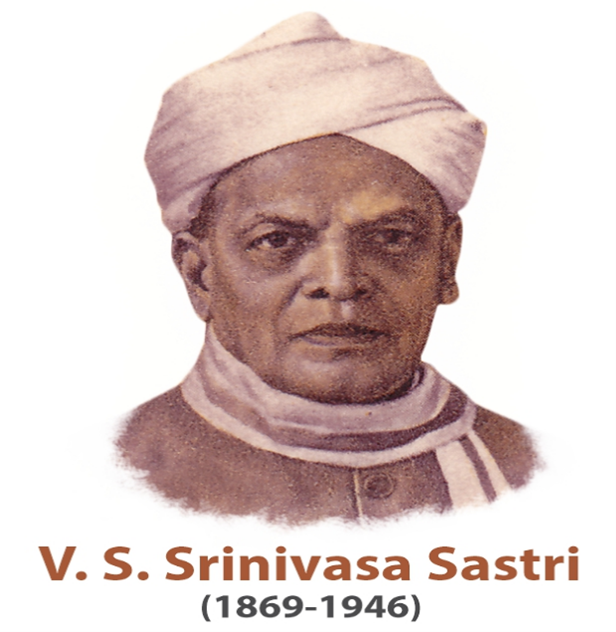
43. V.V.S. Iyer
Early Life and Background
- V.V.S. Iyer was born in 1881 in Varakaneri village, Tiruchirappalli district, Tamil Nadu.
- He pursued a law degree and practiced as a lawyer.
Political Activism
- While studying law in London, V.V.S. Iyer befriended Veer Savarkar and became involved in revolutionary activities.
- He played a key role in organizing protests across India and was instrumental in translating and circulating Savarkar’s “The Indian War of Independence - 1857” both in English and Tamil.
Contributions to Tamil Literature
- V.V.S. Iyer was a dedicated Tamil scholar and contributed significantly to Tamil literature and its growth.
- He was the editor of the Tamil magazine ‘Desabakthan’.
Shift to Non-Violence
- During Gandhi's visit to Pondicherry in 1917, V.V.S. Iyer converted to the principle of ahimsa (non-violence) and aligned himself with Gandhi’s ideals, although he was initially associated with extremist freedom fighters.
Later Life and Legacy
- V.V.S. Iyer returned to India, settled in Pondicherry, and continued his work with other freedom fighters like Subramania Bharathi and Mandayam Srinivasachari.
- Despite passing his barrister exam, he chose not to accept the degree.
- His contributions to both freedom movements and Tamil literature remain notable.
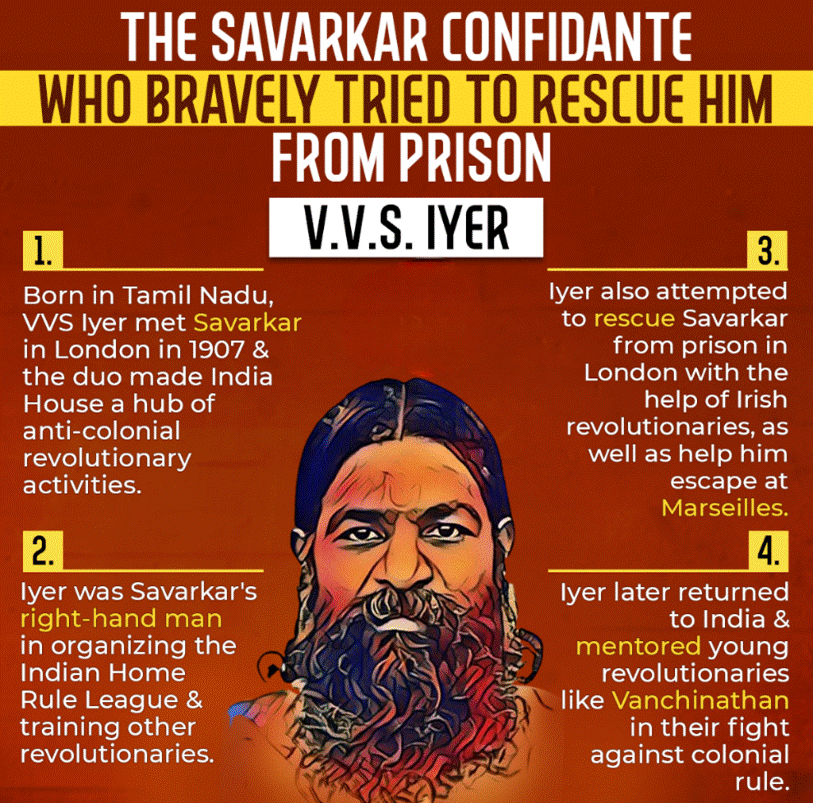
44. K.B. Sundarambal
Early Life and Background
- K.B. Sundarambal was born on October 11, 1908, in Kodumudi, the then Salem district, Tamil Nadu.
- Her early exposure to music and performance began at a young age.
Involvement in the Indian Independence Movement
- Sundarambal, along with her husband S.G. Kittappa, was deeply influenced by the Indian independence movement.
- They became ardent supporters of the Indian National Congress, using their popularity and artistic talents to further the cause.
Contribution to the Independence Movement
- Sundarambal recorded several gramophone discs that highlighted the struggle and sacrifices of the independence movement.
- She made a conscious effort to wear khadi as a symbol of support for the movement and actively campaigned for Congress party candidates in various elections.
- K.B. Sundarambal entered the Legislative Council of Madras State in 1951 as a Congress nominee.
- Thus, she became the first film artist to enter an Indian legislature.
- K.B. Sundarambal died in September 1980.
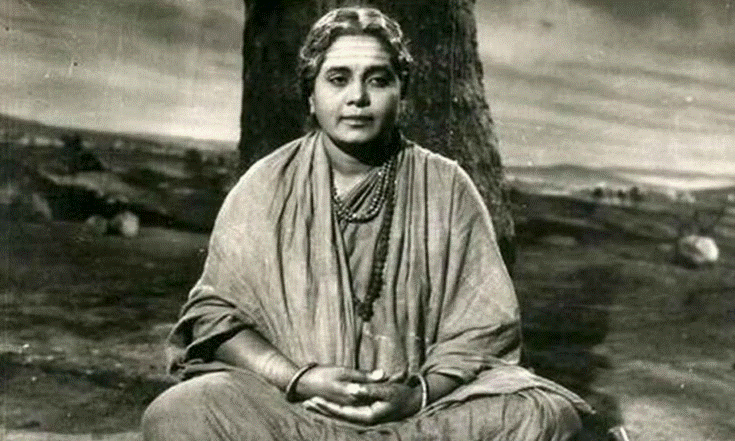
45. M. Veeraraghavachariar
Early Life and Background
- M. Veeraraghavachariar was born in 1857 in Attur, Chengalpattu district, Tamil Nadu.
- He completed his schooling and graduated from Madras.
Founding of The Hindu
- In 1878, Veera raghavachariar, along with G. Subramania Iyer, T.T. Rangachariar, P.V. Rangachariar, D. Kesava Rao Panthulu, and N. Subba Rao Panthulu are collectively known as The Triplicane Six founded the English-language newspaper ‘The Hindu’.
- This initiative was driven by the need for a platform to express organized public opinion against the British administration under Lord Lytton.
Role in the Mahajana Sabha
- On May 16, 1884, Veeraraghavachariar, together with two other associates, established the 'Mahajana Sabha.'
- This public organization aimed to address grievances against the British Indian Government.
- Veeraraghavachariar served as joint secretary of the Sabha for many years.
Involvement with the Indian National Congress
- Veeraraghavachariar was a delegate at the first session of the Indian National Congress held in Bombay.
- He also served as Joint Secretary during the Congress sessions held in Madras in 1887 and 1894.
- He was an active participant in addressing public meetings and advocating for reforms, including the nomination of Indian non-officials to the Legislative Council.
Contributions to Journalism and Politics
- As an editor of ‘The Hindu’, Veeraraghavachariar was deeply involved in movements aimed at advancing India's material and political interests.
- His editorial work and political activism were significant in shaping public opinion and advocating for Indian rights.
Later Life and Legacy
- Veeraraghavachariar continued to run ‘The Hindu’ until his health deteriorated, leading to his retirement in 1905.
- He sold the newspaper to Kasturi Ranga Ayyangar.
- Veeraraghavachariar passed away on October 6, 1906.
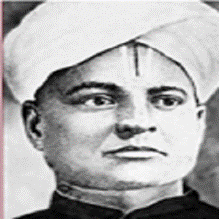
46. A. Rangaswami Iyengar
Early Life and Background
- Date of Birth: 1877.
- Place of Birth: Erukattur village, Thanjavur District, Tamil Nadu.
- Family: Son of Narasimha Iyengar.
- Education: Rangaswami Iyengar received his early education in Nagapattinam, Coimbatore, and Madras, earning degrees in Arts and Law.
Career and Journalism
- Madras Secretariat: Initially joined the government service as a clerk in the Madras Secretariat but resigned in 1902 to set up a law practice in Thanjavur.
- The Hindu: He worked with The Hindu, leaving in 1915 when his request for partnership was declined.
- Swadesamitran: He took over Swadesamitran, becoming its editor and transforming it into a voice for independence.
Political Involvement
- Home Rule Movement: He actively participated in Mrs. Annie Besant’s Home Rule Movement from 1914 to 1918, serving as secretary of the Home Rule League.
- Congress Delegation to England: In 1919, travelled to England as part of a Congress delegation to demand full self-government for India.
- Round Table Conference: He attended the second Round Table Conference in 1931 as Gandhiji’s political secretary and constitutional adviser.
Death
- Date of Death: Passed away on February 5, 1934.
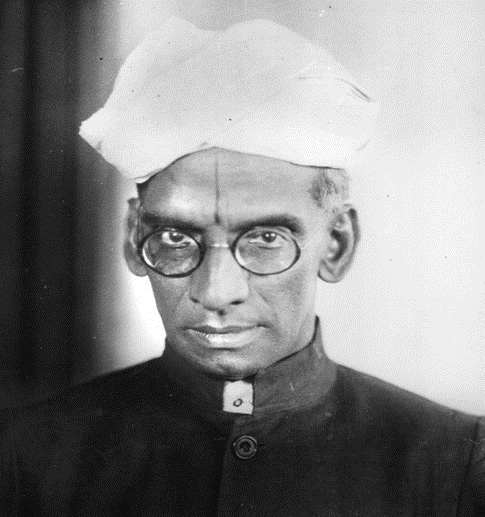
47. Panapakkam Anandacharlu
Early Life and Background
- Date of Birth: August 5, 1843.
- Place of Birth: Panapakkam, near Chengalpattu, Tamil Nadu.
- Migration to Madras: He moved to Madras at the age of 10, where he later pursued a career in law.
Political and Journalistic Contributions
- Journalism: He contributed to magazines like Native Public Opinion and The Madrasi.
- The Hindu: He helped to establish The Hindu in 1878 to voice public concerns against British rule.
- Triplicane Literary Society and Madras Mahajana Sabha: He founded these organizations to promote intellectual discourse and political advocacy.
Involvement with the Indian National Congress
- First Session of the Indian National Congress: He attended the first session in Bombay in 1885.
- Nagpur Session: He elected president of the Congress session in Nagpur in 1891.
- Congress Split of 1906: He sided with the Moderates during the split in 1906.
Honors and Legacy
- Rao Bahadur and CIE: He was honored with the titles of Rao Bahadur and Companion of the Indian Empire in 1897.
- Date of Death: He passed away on January 4, 1908.
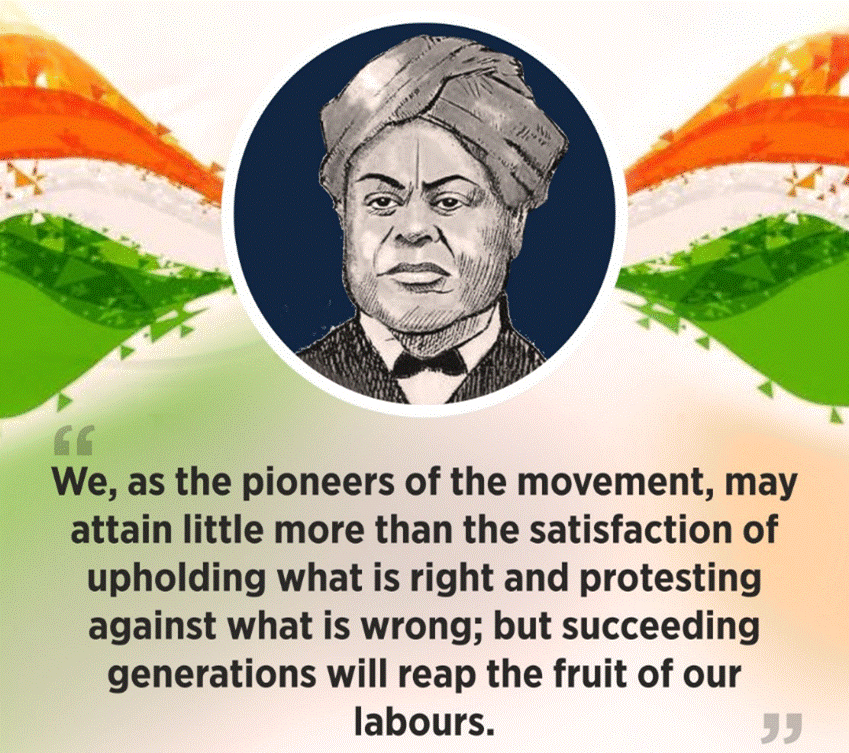
48. Kamala Ramasamy
Early Life and Family Background
- Hometown: Originated from Tiruchirappalli, Tamil Nadu.
- Family: She was wife of Ramasamy, the grandson of the freedom fighter TSS Rajan.
Political Involvement and Activism
- She drawn into the Communist movement by the ideals of CPI leader K. Baladhandayutham.
- Quit India Movement (1942): She actively participated in the Quit India Movement and took part in a general strike in Trichy, being one of only four women involved in the strike.
Imprisonment and Struggles
- South Indian Railway Struggle (1946): She imprisoned for one year for her support of the South Indian Railway struggle.
- Defence Act of India (1947): She arrested again in January 1947 under the Defence Act of India, becoming the only woman in jail across India at that time.
- Her imprisonment during pregnancy caused national concern and led to her release in April 1947.
Post-Independence and Recognition
- Refusal of Pension: Kamala and her husband, Ramaswamy, were offered a freedom fighters pension but declined, stating that they considered their actions as a duty rather than seeking personal gain.
Death
- Death: Kamala Ramasamy passed away on June 9, 2019, at the age of 93.
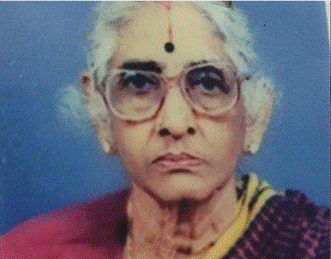
-------------------------------------


